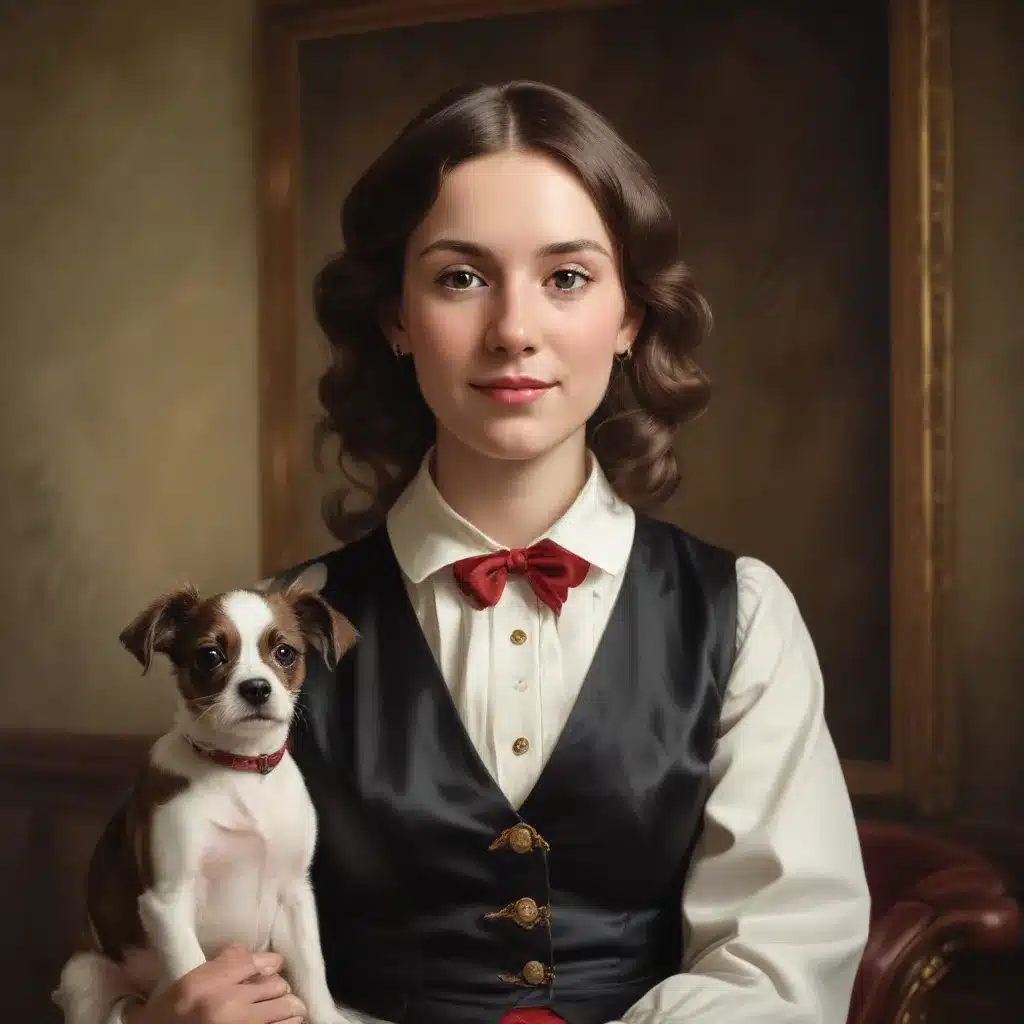
Art history & influence
Pet portraiture has long held a revered place in the annals of fine art, with depictions of beloved animal companions serving as cherished testaments to the deep bonds between humans and their furry, feathered, or scaled friends. From the exquisite oil paintings of Sir Edwin Landseer to the vivid digital masterpieces of contemporary pet artists, the legacy of pet portraiture is one that deserves to be preserved and celebrated for generations to come.
Throughout history, pet portraits have not only documented the physical likenesses of our animal companions but have also imbued them with a sense of personality, character, and emotional resonance. These works serve as windows into the lives and relationships of their subjects, preserving a moment in time that might otherwise be lost to the ravages of memory and the passage of years.
Techniques & tutorials
As caretakers of this artistic heritage, it is our responsibility to ensure that these precious portraits are meticulously maintained and protected, whether they are painted in oils, rendered in digital media, or sculpted in three-dimensional form. Each medium presents its own unique challenges and considerations when it comes to preservation.
For traditional oil paintings, the focus must be on proper canvas or panel preparation, the use of archival-quality pigments and mediums, and the implementation of varnishing techniques to safeguard the work from the ravages of time and environmental factors. Tutorials on underpainting, glazing, and impasto application can help artists create works that will stand the test of time.
In the realm of digital art, the preservation of pet portraits requires a different set of strategies. Ensuring that files are properly backed up, color-managed, and archived in industry-standard formats can help mitigate the risks of data loss or technological obsolescence. Exploring printing techniques that utilize archival-quality inks and substrates can also contribute to the longevity of these digital masterpieces.
For sculptural pet portraits, the emphasis must be on the selection of durable materials, the proper sealing and finishing of the work, and the implementation of climate-controlled storage environments to protect against the ravages of temperature, humidity, and other environmental factors.
Color theory for pet portraits
The use of color theory is paramount in the creation of captivating pet portraits, as the artist must not only capture the physical likeness of the subject but also convey the emotional depth and personality that lies within. Mastering the principles of hue, value, and saturation can help artists achieve a level of realism and expressiveness that resonates with viewers on a profound level.
Techniques such as complementary color pairing, atmospheric perspective, and the strategic use of warm and cool tones can all contribute to the creation of pet portraits that are not only visually stunning but also imbued with a sense of depth and character.
Drawing methods for pets
Alongside the mastery of color theory, pet portrait artists must also hone their drawing skills to ensure that the foundational structure of their work is solid and true to life. Techniques such as gesture drawing, contour drawing, and constructive drawing can help artists capture the unique anatomical features and dynamic poses of their animal subjects.
The use of reference material, whether it be photographic or observational sketches, is also crucial in ensuring that the proportions, anatomy, and movement of the pet are accurately represented. Tutorials on value studies, line quality, and rendering can further refine the artist’s ability to breathe life into their pet portrait creations.
Transforming sketches into final works
The journey from initial sketch to final, polished pet portrait is one that requires a deep understanding of the various stages of the artistic process. From the blocking in of shapes and values to the refinement of details and the final finishing touches, each step is crucial in the creation of a work that is not only technically proficient but also emotionally resonant.
Mastering techniques such as underpainting, layering, and blending can help artists achieve a level of realism and depth that captivates the viewer. The careful consideration of composition, focal points, and negative space can also contribute to the overall impact and visual harmony of the final work.
Pet portrait inspirations
Throughout history, pet portraits have served as a source of inspiration and delight, capturing the unique personalities and endearing qualities of our animal companions. From the regal and noble hounds of Landseer to the playful and mischievous cats of Theophile Steinlen, these works have the power to transport us to a world of unconditional love, unwavering loyalty, and the pure joy that comes from the companionship of our four-legged friends.
In the modern era, contemporary pet portrait artists continue to push the boundaries of this cherished art form, exploring new mediums, techniques, and styles to capture the essence of their subjects. Whether it’s the vibrant and expressive digital paintings of Angie Rozelaar or the captivating bronze sculptures of Laurel Peterson Gregory, the legacy of pet portraiture remains a testament to the deep and abiding connection between humans and their animal companions.
As we strive to preserve the artistic heritage of pet portraiture, it is important to remember that these works are not merely static representations of our beloved pets, but rather living, breathing testaments to the rich tapestry of our lives and relationships. By carefully maintaining and protecting these precious artworks, we ensure that the stories they tell will continue to be passed down for generations to come, inspiring and delighting audiences for years to come.
To learn more about preserving your own pet portraits, visit Pencil & Paint Muse for a wealth of resources and expert guidance on the art of pet portraiture.